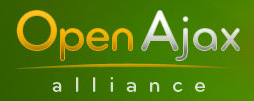Two new improvements have just gone into place to help improve the quality of the jQuery site.
The jQuery Mailing List is now hosted with Google Groups.
This move is going to help provide huge increases in the overall speed, and quality, of the jQuery mailing list. At the time of the move we were sending out, approximately, 4.5m emails per month. Unfortunately, the list was prone to folding under the high server load; and the amount of effort required to keep it performing nicely was simply too much to ignore.
The best feature of the new mailing list (besides the increased reliability) is the addition of Google Groups’ wonderful web-based interface. I hope that everyone who’s asked for a forum can now be content knowing that they can browse the jQuery list, and easily reply to posts, without ever having to subscribe to incoming messages.
Note: If you were a member of the old mailing list, you should be completely moved to the new one. All old messages and users were moved over, and everything should be intact.
Complete instructions on how to use the main discussion mailing list, and all the other jQuery mailing lists, can be found on here: jQuery Mailing Lists.
All code is now hosted with Amazon S3.
As a project, we’ve never discouraged first time users from using the jQuery Source Code straight from their personal site; it helps to get new users started with development, without having to worry about keeping their code up to date.
Needless to say, the number of users who’ve directly used the jQuery source directly from the jQuery site has increased dramatically in recent months (with some large-scale sites directly pulling from jQuery.com). This still isn’t a huge problem, but it’s something that the web server hosting jQuery.com shouldn’t have to worry about. For that reason, all jQuery source code has been moved to Amazon S3, for example: http://code.jquery.com/jquery-latest.js.
The jQuery site has been using the code directly from Amazon S3 for over two weeks now and I’ve been very pleased with the results. The number of files requested has dropped dramatically, giving the web server more time to serve the normal jQuery web pages.
Note: All old requests to http://jquery.com/src/… are being redirected to the http://code.jquery.com/… sub-domain (which is managed by Amazon).
A nice thing about this move is that we can soon start providing dedicated hosting for plugins. Once we figure out the logistics of the plugin repository (which is currently under development), we’ll be sure to make that a priority.
Additionally, static jQuery.com files (like stylesheets, images, and JavaScript files) are being hosted directly from Amazon S3 too (static.jquery.com). This is also helping to alleviate any strain on the server that may be present.
As always, if you get any errors on the jQuery site, please be sure to send a message to the mailing list, where we can find it and help to solve the problem.
1.1.3 News
All of these site issues have delayed jQuery 1.1.3 slightly, but now that they’re out of the way we should be back on track for having a 1.1.3 alpha out by the end of this week. This update is going to include significant updates to the performance of jQuery animations and huge speed increases to the selector engine; as well as fixing over 20 outstanding bugs. We hope to have an update concerning all of this, shortly.




